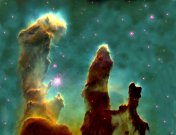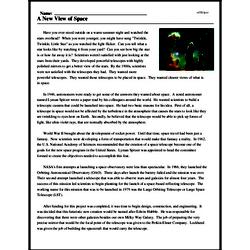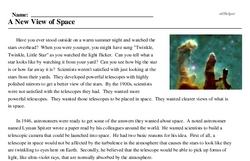A New View of Space
Have you ever stood outside on a warm summer night and watched the stars overhead? When you were younger, you might have sung "Twinkle, Twinkle, Little Star" as you watched the light flicker. Can you tell what a star looks like by watching it from your yard? Can you see how big the star is or how far away it is? Scientists weren't satisfied with just looking at the stars from their yards. They developed powerful telescopes with highly polished mirrors to get a better view of the stars. By the 1900s, scientists were not satisfied with the telescopes they had. They wanted more powerful telescopes. They wanted those telescopes to be placed in space. They wanted clearer views of what is in space.
In 1946, astronomers were ready to get some of the answers they wanted about space. A noted astronomer named Lyman Spitzer wrote a paper read by his colleagues around the world. He wanted scientists to build a telescopic camera that could be launched into space. He had two basic reasons for his idea. First of all, a telescope in space would not be affected by the turbulence in the atmosphere that causes the stars to look like they are twinkling to eyes here on Earth. Secondly, he believed that the telescope would be able to pick up forms of light, like ultra-violet rays, that are normally absorbed by the atmosphere.
World War II brought about the development of rocket power. Until that time, space travel had been just a fantasy. Now scientists were developing a form of transportation that would make that fantasy a reality. In 1962, the U.S. National Academy of Sciences recommended that the creation of a space telescope become one of the goals for the new space program in the United States. Lyman Spitzer was appointed to head the committee formed to create the objectives needed to accomplish this feat.




